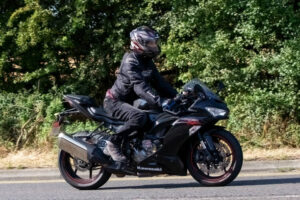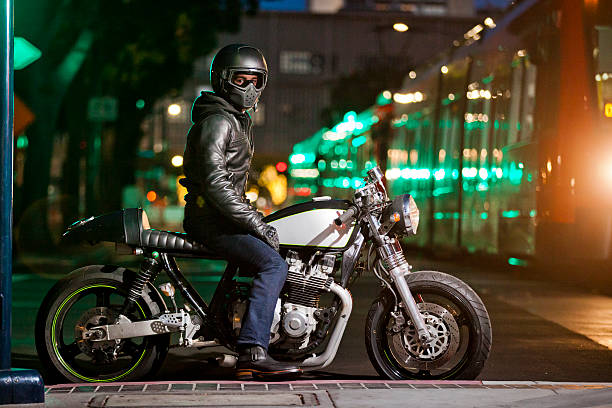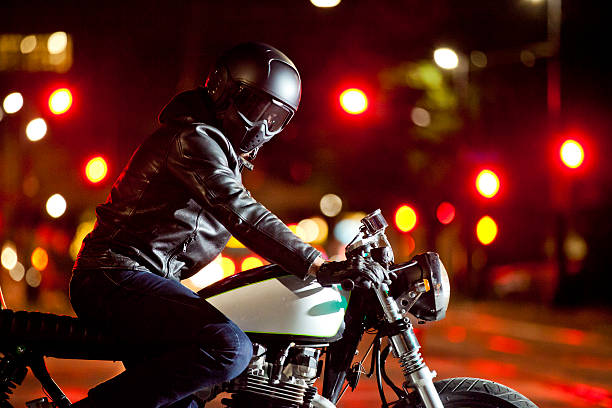Motorcycle Club Hierarchies and Vests
The mens motorcycle club vest is a complicated symbol of identification and status among motorcycle clubs. These vests, called ‘cuts’ or ‘colors,’ include several patches with a purpose, telling the club’s and each member’s story.

To an outsider, a motorcycle club’s assortment of painted vests can appear as informal wear, but these garments represent profound symbols of loyalty and respect to the members. Like a family or military organization, motorcycle clubs often have a tight hierarchy. The vest’s decorations signify rank, role, and experience.
Patches for President, Vice President, Secretary, Treasurer, and Sergeant-at-Arms indicate motorcycle club hierarchy. Each role matters, and the patches are proudly worn. The President’s patch is usually placed in the center of the back of the vest as a sign of leadership and a target; it’s well-known that the President always represents the club’s beliefs. Other officers openly display their titles on their vests for face-to-face interactions.
You acquire these vests, and the patches on them are badges of honor that show off your abilities, obligations, and accomplishments. Club ‘prospects wear plain vests to represent their probationary and learning period. They receive patches as they demonstrate club commitment. The prospect-to-fully patched member transition marks full admission into the club’s brotherhood.
Patch placement on the vest is likewise strictly regulated. The club symbol usually dominates the back. This has top and bottom rockers with the club’s name and charter place. The ‘MC’ patch is essential to a motorcycle club. Around these basic features are the military, club, and memorial patches.
Motorcycle club vests record personal and club history. Many vests have rally or event patches as a symbol of involvement in significant events, often acting as neutral grounds for clubs to assemble and socialize under a shared enthusiasm for motorcycling. Some members wear patches recognizing unique abilities or positions, such as ‘Road Captain’ for club ride logistics.
Colors are crucial. Colors and their arrangement indicate alliance, territory, or rivalry. In some locations, a biker’s vest color might indicate his club and the sight of specific colors can dissuade or instigate fights.
Law enforcement and the public commonly mistake these vests for gang gear. However, for clubs, the disparities are evident and essential. They say their regalia is about tradition, identity, and fraternity, not illegal meanings in media. This mistake shows how motorcycle subcultures and mainstream society interact, where another can misinterpret one group’s emblems.
Wearing a vest reinforces the club’s beliefs and relationships between members. Many organizations consider vest destruction or loss a significant shame. Carefully handled vests are generally essential at all club functions.
Interestingly, the vest symbolizes both club membership and uniqueness. Each biker’s vest tells his story and his club’s with patches and events. The motorcycle club’s ethos a single organization of unique individuals is reflected in the vest’s dual role as a personal and social relic.
The men’s motorcycle club vest symbolizes a complicated code of conduct, honor, and personal history that makes motorcycle club culture so appealing. It represents identity and camaraderie, and its importance in these clubs’ hierarchies shows how deeply these garments signify to bikers. Members wear their vests to show their loyalty to their club and one another, creating a powerful and unique visual narrative of camaraderie and dedication.

Creative Men’s Motorcycle Club Vest Customization Ideas
Personalizing a men’s motorcycle club vest is about adding stories and meanings that reflect the wearer’s identity and the club’s values. Customizing a motorbike vest is an artistic way for a biker to express himself while following club rules.
Customizing a motorcycle club vest involves choosing a base material and adding patches, buttons, and embroidery to commemorate personal achievements or events. Leather is the preferred vest material because of its durability, protection, and traditional, uncompromising style that ages well. A good leather vest offers a sturdy canvas for patches and other embellishments.
The vest’s most essential patches are usually on the back. A vast club logo is generally put in the center. This patch is the vest’s focal point and represents the biker’s club loyalty. Rockers flank the central emblem, with the top rocker showing the club’s name and the bottom rocker the chapter’s location. These are arched over and under the main patch to look coherent and powerful.
Bikers often add a club moniker or road name patch to their vests below the back patches. Fellow bikers pick this, which might reflect their personality or outstanding deeds. Memorial acknowledgments, which honor deceased colleagues and strengthen club relationships, are typical back patches.
Customization choices are also plentiful on the vest front. The left breast often has the biker’s name and club membership date sewn into the leather. Conversely, the right breast may have a national flag patch or a personal emblem. The little square patches show the wearer’s club titles, such as ‘Sergeant-at-Arms’ or ‘Road Captain.’
Apart from patches, metal pins can modify a vest. Rallies, philanthropic events, military service, and other achievements can earn pins. A vest with pins stands out in a crowd with its roughness and shiny luster. Additionally, these pins can be deliberately placed to balance the look or accent spots.
Stitching and embroidery can give the vest a unique look and allow for detailed designs that patches cannot. Some bikers have giant, embroidered artwork of native fauna, historical dates, or club slogans. This modification makes the vest a work of art and personalizes it.

The vest’s color is also adjustable. Black is classic and famous for its rugged, understated look and flexibility to match any patch color or design. However, some teams have color codes based on their identity. Dark browns and even whites are occasionally used to highlight patch colors.
The internal lining can be customized with a meaningful fabric for those who want to personalize their vests. A fabric from a noteworthy event, printed with meaningful designs, or a favorite color or pattern could be used.
The vest is a personal billboard and a story of the rider’s experience in motorcycle clubs. Thus, intelligent vest customization can enrich this story by representing a rider’s identity, affiliations, travels, and achievements. Each patch, pin, and personalized embroidery on the vest tell the wearer’s narrative; thus, no two vests are the same. This creative process makes the vest a biker’s pride and tradition unique to the rider.




Leave a Reply